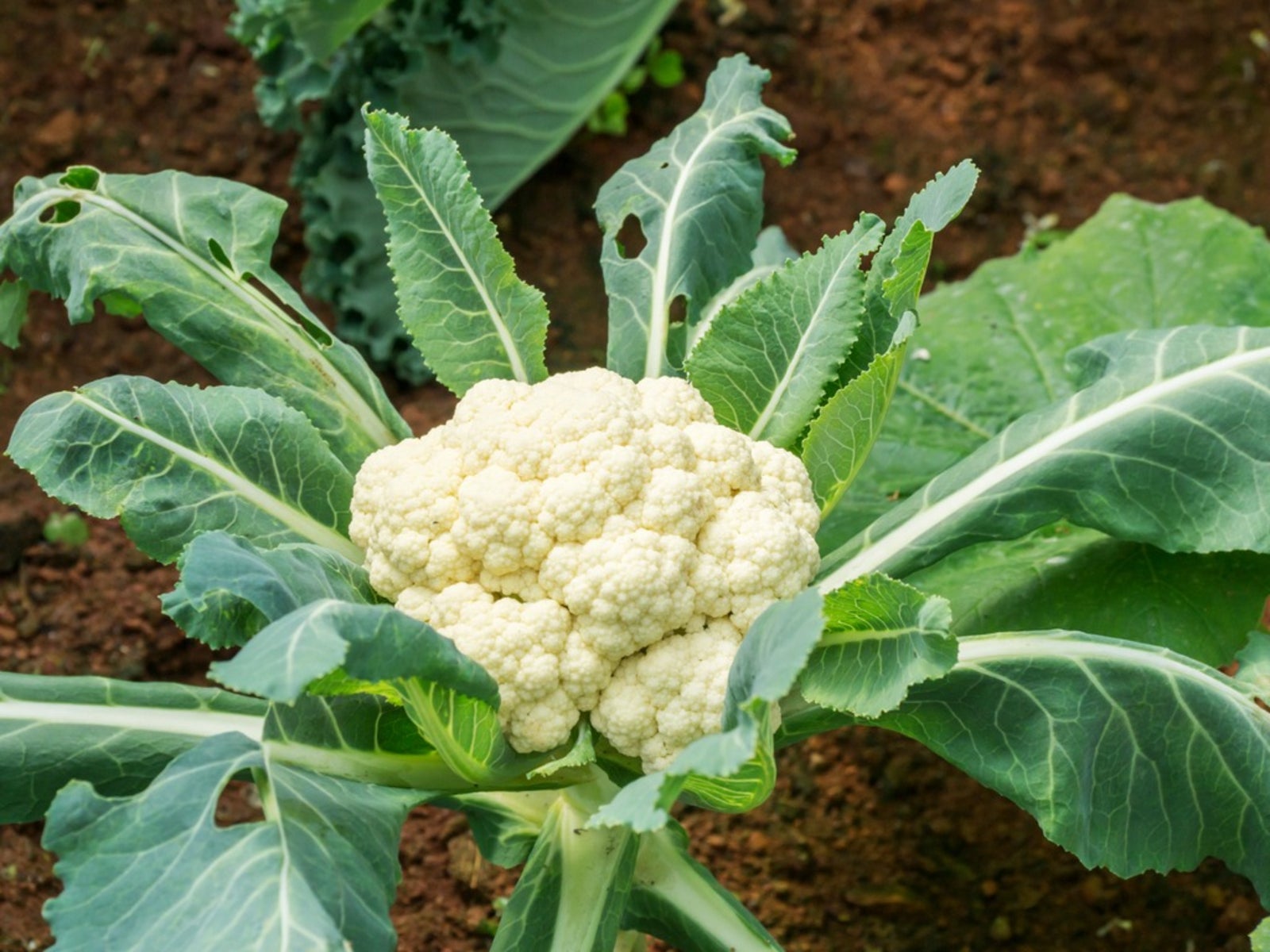Problems Growing Cauliflower – Learn About Diseases Of Cauliflower

Cauliflower is a member of the Brassica family that is grown for its edible head, which is actually a grouping of abortive flowers. Cauliflower can be a little finicky to grow. Problems growing cauliflower may arise due to weather conditions, nutrient deficiencies and cauliflower diseases. Knowing what type of cauliflower diseases may afflict the veggie and troubleshooting these cauliflower problems will aid in the healthy production and yield of the plant.
Diseases of Cauliflower
Knowing diseases of cauliflower can also help with your other cruciferous crops, such as cabbage and rutabaga. Diseases may be caused by viruses, bacteria, and fungi.
- Alternaria leaf spot, or black spot, is caused by Alternaria brassicae. This fungus presents as brown to black ringed spots on lower leaves of the cauliflower. In its advanced stage, this fungal disease turns the leaves yellow and they drop. While Alternaria leaf spot primarily occurs on leaves, the curd may be infected as well. The disease is spread by spores that are spread by wind, splashing water, people and equipment.
- Downy mildew is also caused by a fungus, Peronospora parasitica, which attacks both seedlings and mature plants. It is seen on the upper surface of the leaf as small yellow spots that eventually turn brown. On the underside of the leaf, white downy mold appears. Vascular discoloration may also occur. Downy mildew also acts as a vector for bacterial soft rot.
- Bacterial soft rot is an odiferous condition that presents as small water soaked areas that expand and cause the plant’s tissue to become soft and mushy. It enters through wounds caused by insects or damage caused by machinery. Humid and wet conditions encourage the disease. Space plants to allow for air circulation and avoid sprinkler irrigation. Take care when working around plants with tools or machinery. Seeds may also be treated with hot water to kill black rot and other bacterial infections. Also, use disease resistant seed when possible.
- Blackleg is caused by Phoma lingam (Leptosphaeria macutans) and is a major scourge in cruciferous vegetables. The fungus remains in cruciferous veggie detritus, weeds and seeds. Again, wet weather is a major factor in the spread of the spores of blackleg. Afflicted seedlings are killed off by this disease, which presents as yellow to brown spots with gray centers on the leaves of the plant. Hot water or fungicide can control blackleg, as can limiting work in the garden during wet periods. If the infection is severe, do not plant any cruciferous crops in the area for at least 4 years.
Additional Cauliflower Diseases
- Damping off is caused by the soil fungi Pythium and Rhizoctonia. Both seed and seedlings are attacked and rot within a few days. Older plants afflicted with Rhizoctonia end up with wire-stem, a condition where the lower stem becomes constricted and dark brown at the soil surface. Use treated seed, pasteurized soil and sanitized equipment to thwart damping off disease. Don’t overcrowd seedlings or overwater. Sow in well-draining medium.
- Yet another cauliflower disease is clubroot, which is caused by Plasmodiophora brassicae. This destructive soil borne disease affects many wild and weed members of the cabbage family. Entry of the fungus via the root hairs and damaged roots rapidly accelerates. It causes abnormally large taproots and secondary roots, which then decay and release spores that can live for a decade in the soil.
- Fusarium yellows or wilt symptoms are akin to those of black rot, although it can be distinguished because leaf dieback progresses from the petiole outwards. Also, afflicted leaves usually curve laterally, leaf margins often have a reddish-purple streak and dark discolored vascular areas are not representative of Fusarium yellows.
- Sclerotinia blight is caused by Scierotinia sclerotiorum. Not only cruciferous crops are susceptible, but many other crops like tomatoes. Windblown spores attack both seedlings and mature plants. Water soaked lesions appear on the plant and the affected tissue turns grey, often accompanied by a fluffy white mold dotted with hard, black fungus called sclerotia. In the final stages, the plant is dotted with pale grey spots, stem rot, stunting and eventual death.
Troubleshooting Cauliflower Problems
- If possible, plant disease resistant seeds. If that isn’t possible, pre-treat seeds with hot water to kill bacterial infections.
- Don’t use old seeds or improperly stored seeds, which will produce weak plants susceptible to disease.
- Avoid damaging cauliflower plants.
- Practice crop rotation to prevent the common diseases of cauliflower. This includes avoiding the planting of any of cauliflowers relatives (such as broccoli, cabbage, Brussels sprouts or kale) for at least three years.
- Lime the soil to prevent fungal infections.
- Use only new or sterile flats and tools.
- Allow plenty of space between seedlings to foster good air circulation.
- Avoid watering from above, which will spread potential spores more easily.
- Remove and destroy seedlings that show signs of infection.
Sign up for the Gardening Know How newsletter today and receive a free copy of our e-book "How to Grow Delicious Tomatoes".

Amy Grant has been gardening for 30 years and writing for 15. A professional chef and caterer, Amy's area of expertise is culinary gardening.
